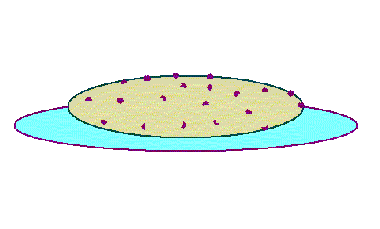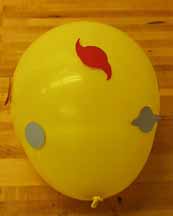
In the 1920s an astronomer named Edwin Hubble observed the light from distant galaxies and he noticed something amazing. He saw that the light from these galaxy clusters was redshifted, which meant that they were all moving away from us. The galaxy clusters that were farther away from us were moving at a faster rate, the farther they were away. The universe seemed to be expanding!
What does it mean for the universe to be "expanding"?Our universe is undergoing a continuous outward expansion as a function of time, so that as time goes by, distant galaxies move farther and farther away from us. We can determine a relationship between their redshift and their distance from us, which is the distance de |
| The Raisin Bread Analogy: |

|

|
||||
|
Raisin Bread (1):
This first picture shows a ball of raisin bread dough. Did you know raisin bread is a really good example of an expanding universe? Let's assume that this ball of dough is our universe, and each raisin represents a galaxy cluster. The raisins are distributed fairly uniformly throughout the dough, just like the galaxy clusters in our universe. |
Raisin Bread (2):
But what happens if we let the raisin bread dough sit out to rise for awhile? As you can see in the picture, as the dough rises and expands, the raisins start to move away from each other. The raisins closer to the edges of the dough move away from the center faster than the one that are closer to the center. Now imagine our galaxy cluster as one of the raisins near the center of the dough. The farther the other raisins are from us, the faster they are moving away from us. |
||||

 Go Back
Go Back Next
Next